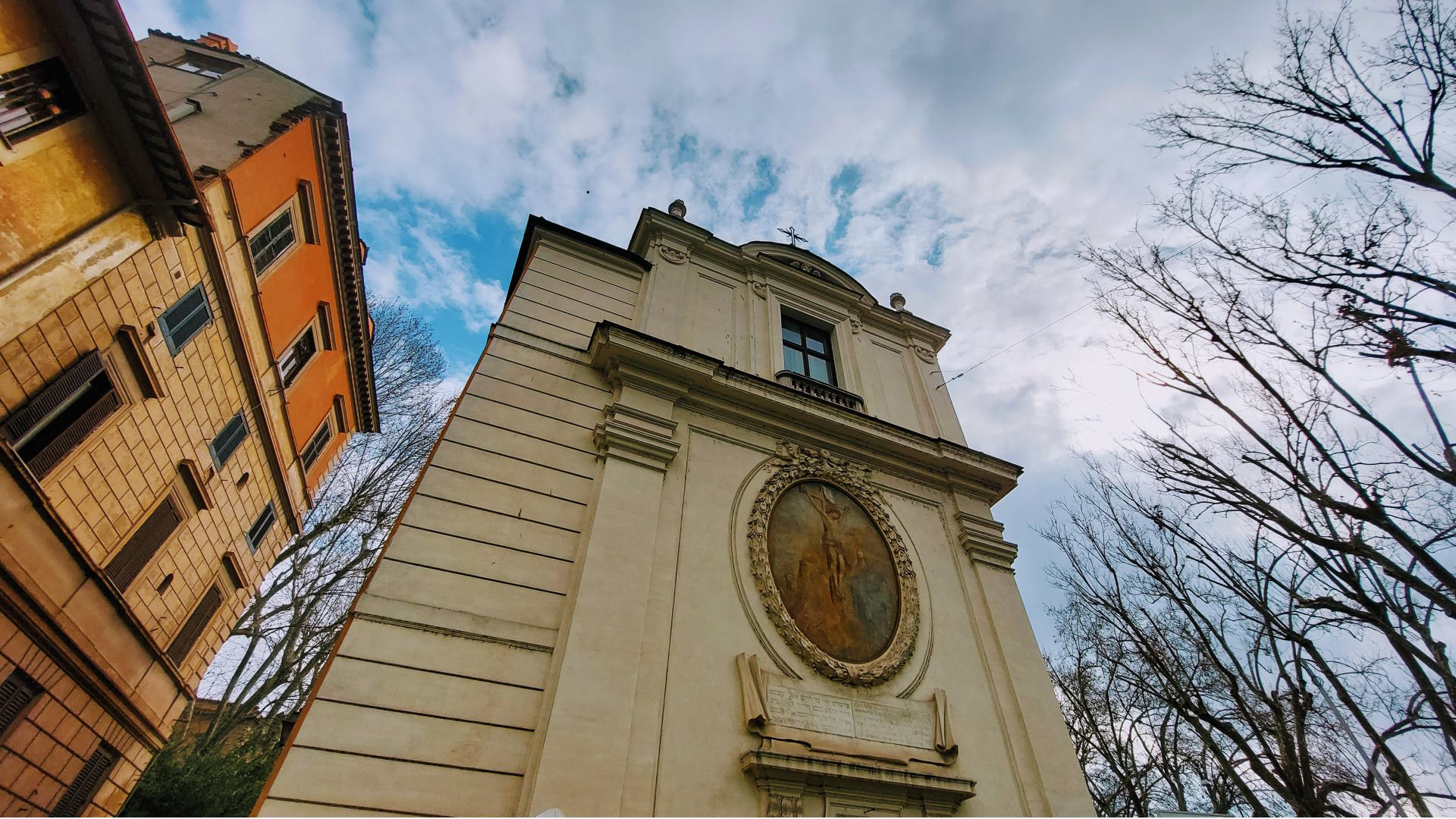
It is one of Rome’s small and charming churches, and like others it has a long history. It is located in the Rione Sant’Angelo, a few steps from the Synagogue and the Pons Fabricius that connects the Tiber Island to the left bank of the Tiber. Since the 16th century the bridge was also known as Pons Jadaeorum (since it represented an outer boundary of the old Jewish quarter) or of Quattro Capi (the Four Heads), hence the name by which the church is known.
Its firs documentary evidence is in a 15th-century catalog, but the church was most likely built on an older oratory, itself built on the site where St. Gregory the Great was said to have been born or lived around the mid-6th century. In the early 18th century it was entrusted to the Congregation of the Works of Divine Piety, one of the many Roman congregations devoted to charity, in this case assisting families who had fallen upon hard times. In those same years, it was rebuilt by Filippo Barigioni, and on the portal was probably added the oval with a fresco representing the Calvary attributed to French painter Etienne Parrocel. From a second restoration carried out in 1858 derives much of the interior decoration, which nonetheless preserves on the high altar a 17th-century icon by the Flemish painter Gilles Hallet, depicting the Madonna of Divine Pity.
On the portal, an inscription on a marble tablet, written in both in Hebrew and Latin, bears a passage from the Old Testament (the book of the Prophet Isaiah) with a notorious reproach to the Jews: Expandi manus meas tota die ad populum incredulum qui graditur in via non bona post cogitationes suas populus qui ad iracundiam provocat me ante faciem meam semper, that is “I have stretched out My hands all day long to a rebellious people, who walk in way that is not good, according to their own thoughts; a people who provoke Me to anger continually to My face”. Along with the nearby Sant’Angelo in Pescheria and the Tempietto of Santa Maria del Carmine, the little church was also the site of the compulsory or “forced” Christian sermons that Roman Jews were forced to attend for a number of centuries, until the mid-19th century. On the sides of the church, on the other hand, two almonies are still visible today: one for “poor and needy families” and the other for “Our Lady of Divine Pity”.
The old Jewish Quarter
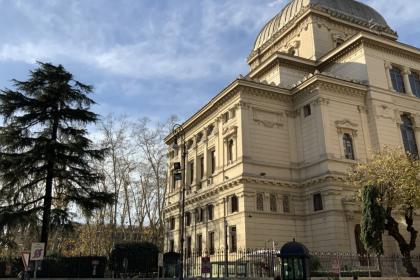
 Condividi
Condividi
The Great Temple
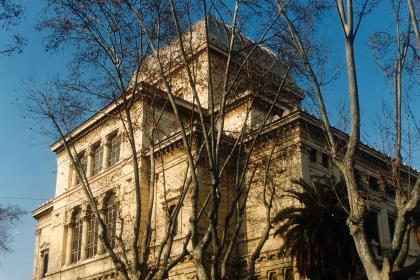
 Condividi
Condividi
Pons Fabricius
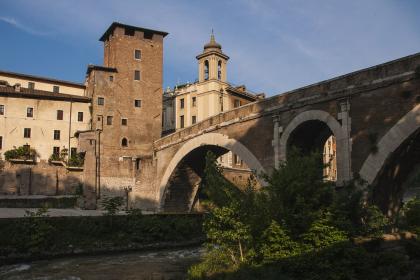
 Condividi
Condividi
The Portico of Octavia
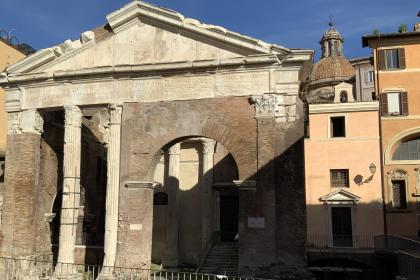
 Condividi
Condividi
Information
The church is closed at the public and is only open during events of the Congregation of the Workers of Divine Mercy
 Condividi
Condividi
Location
To find out about all accessibility services, visit the Rome accessible section.











































